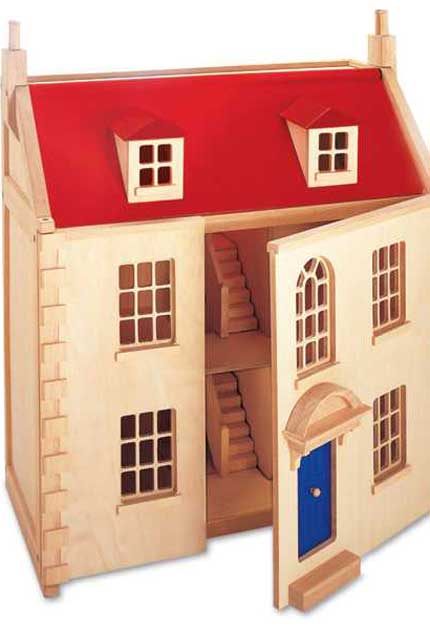Floor space: Will British rooms get bigger?
The rooms in our homes are the smallest in Europe – but that could be about to change. Graham Norwood investigates

There may be an unexpected silver lining to the housing market's downturn: we could end up with larger rooms in our homes as a result. It has been well documented that British new-build homes are the smallest in Europe. The average floor space of a new home here (this includes houses as well as flats) is just 818 square feet; Denmark is highest with 1,475 square feet, and Greece comes second with 1,361 square feet. In France, it is more than 1,200 square feet.
Data complied by the Home Builders Federation and other organisations shows that a typical new-home built in Britain this year will be 55 per cent smaller than one built 80 years ago. And there are now 20 per cent more rooms than a quarter of a century ago, meaning we have moved from a country of few large rooms to one of numerous small ones.
Four reasons lie behind this trend. First, unlike most nations, Britain has no legal minimum-space standard for homes. Second, many schemes of flats built since 1999 have included smaller-than-usual studio and one- and two-bedroom units aimed at landlord buyers who have assumed tenants would make do with small rooms. Third, high land prices have obliged developers to pack in vast numbers of tiny homes to maximise the profitability of schemes. Finally, the Government's build targets have effectively forced local council planners to permit ever-smaller homes.
This trend has not been without some public support. "In recent years, people have asked for home offices, which tend to be small," says Chris Fayers of the West Country developers Eagle One. "Until now, they've also eaten out more, so some kitchens are smaller. There may now be more small rooms where there were fewer large ones."
"Remember, design is as vital as space," claims Julian d'Arcy of the Leeds office of the estate agency Knight Frank. "I've known well-designed smaller apartments that appear and operate in a bigger and better way than a poorly designed larger one."
In addition, small rooms are cheaper to heat. "They may give tenants and owners more flexibility to heat some areas and not others, therefore optimising their fuel bill," says a spokeswoman for the Citizens' Advice Bureau. But in the long term, rooms in new houses will almost certainly get larger.
Some politicians – notably the Mayor of London, Boris Johnson, who says the capital's new small homes are "shameful" – want a return to the so-called Parker Morris standards, introduced for council housing in 1967. These say that there should be 355 square feet of internal space for the first occupant, with each additional resident getting another 140 square feet. So a one-bed flat for two people should be at least 495 square feet.
Contrast that minimum with a converted studio flat on sale near Gloucester Road in central London. It has just 170 square feet and costs a cool £225,000, even in today's declining market (Douglas and Gordon, 020-7581 1152). The same agency has a flat in Queens Gate Gardens, also in central London, that is slightly smaller still at 169 square feet. It also costs £225,000 and is, according to the publicity material, "thoughtfully designed to maximise the space".
Even if you accept that a studio flat has only one resident – and many actually have two – these examples are less than 50 per cent of the standard promoted for social housing more than four decades ago by Parker Morris. But more influential than political pressure may be the financial squeeze hurting developers.
Small flats are simply not selling because in many areas there are too many new-builds or properties still under construction. Few housing associations are bailing out private developers by buying surplus stock because, even with price reductions, it is too expensive, has costly service charges and is – critically – too small.
The phenomenon of a long-term glut of unsold flats is happening just as land prices for residential development have plummeted.
Knight Frank says that after years of steeply rising values, building land outside of London has now fallen by 33 per cent over the past year and by 15 per cent in just a three-month period to late 2008.
That means that while today's developers of flats have had to pack in small units to justify the cost of the plot, developers of future schemes will be buying land at much lower prices, thus ending the financial requirement for high-density development and its consequent small homes and rooms.
Private developers, unsurprisingly, are not happy at the prospect. The chairman of Countryside Properties, Alan Cherry, has already gone on the record claiming that any insistence on larger rooms "inhibits designers to some extent".
But anyone who has been lived in a tiny new home or a converted flat may well look kindly on the credit crunch inadvertently producing a more expansive lifestyle. And if they have a cat, they may at last have room to swing it.
Join our commenting forum
Join thought-provoking conversations, follow other Independent readers and see their replies
Comments
Bookmark popover
Removed from bookmarks